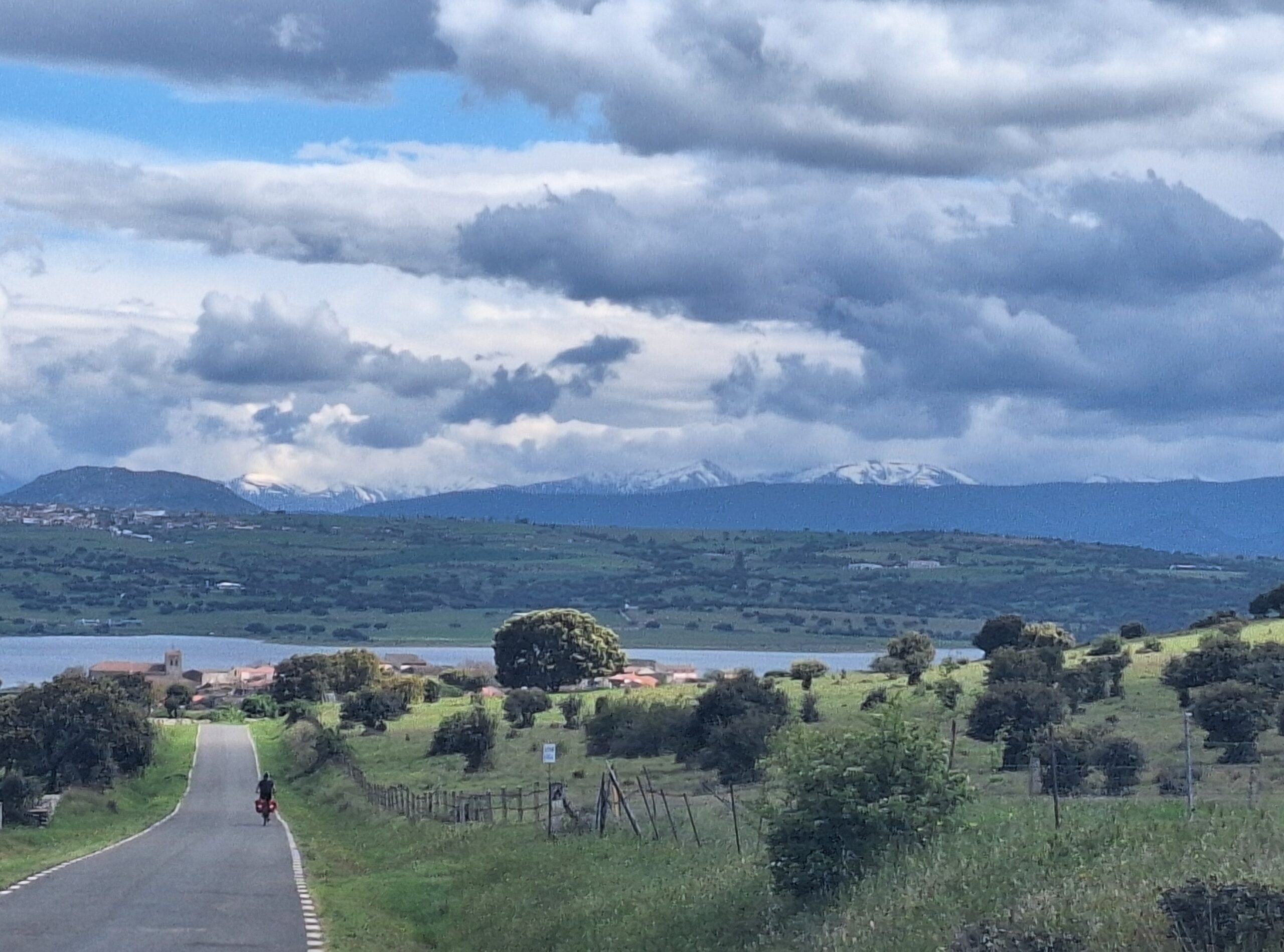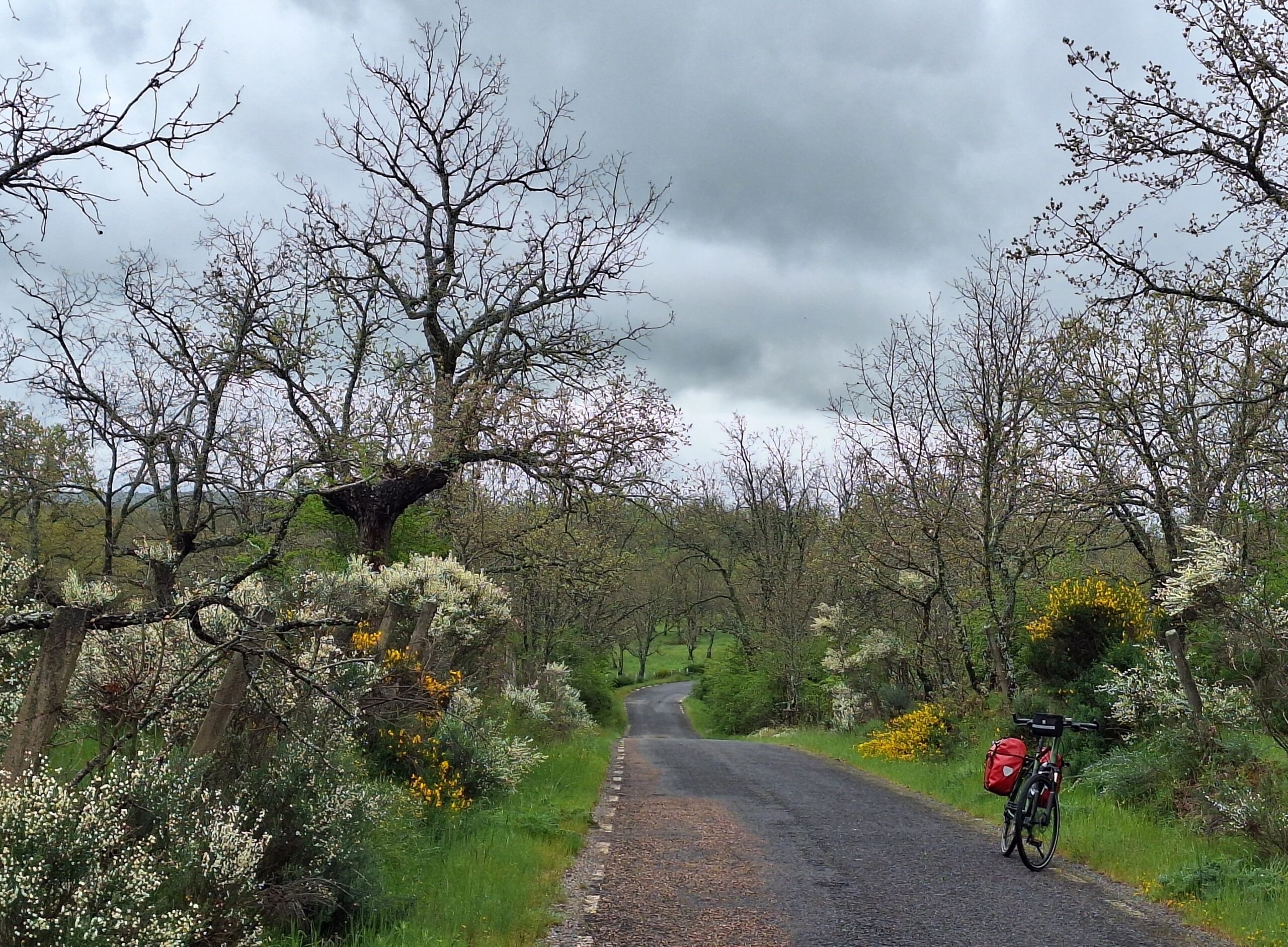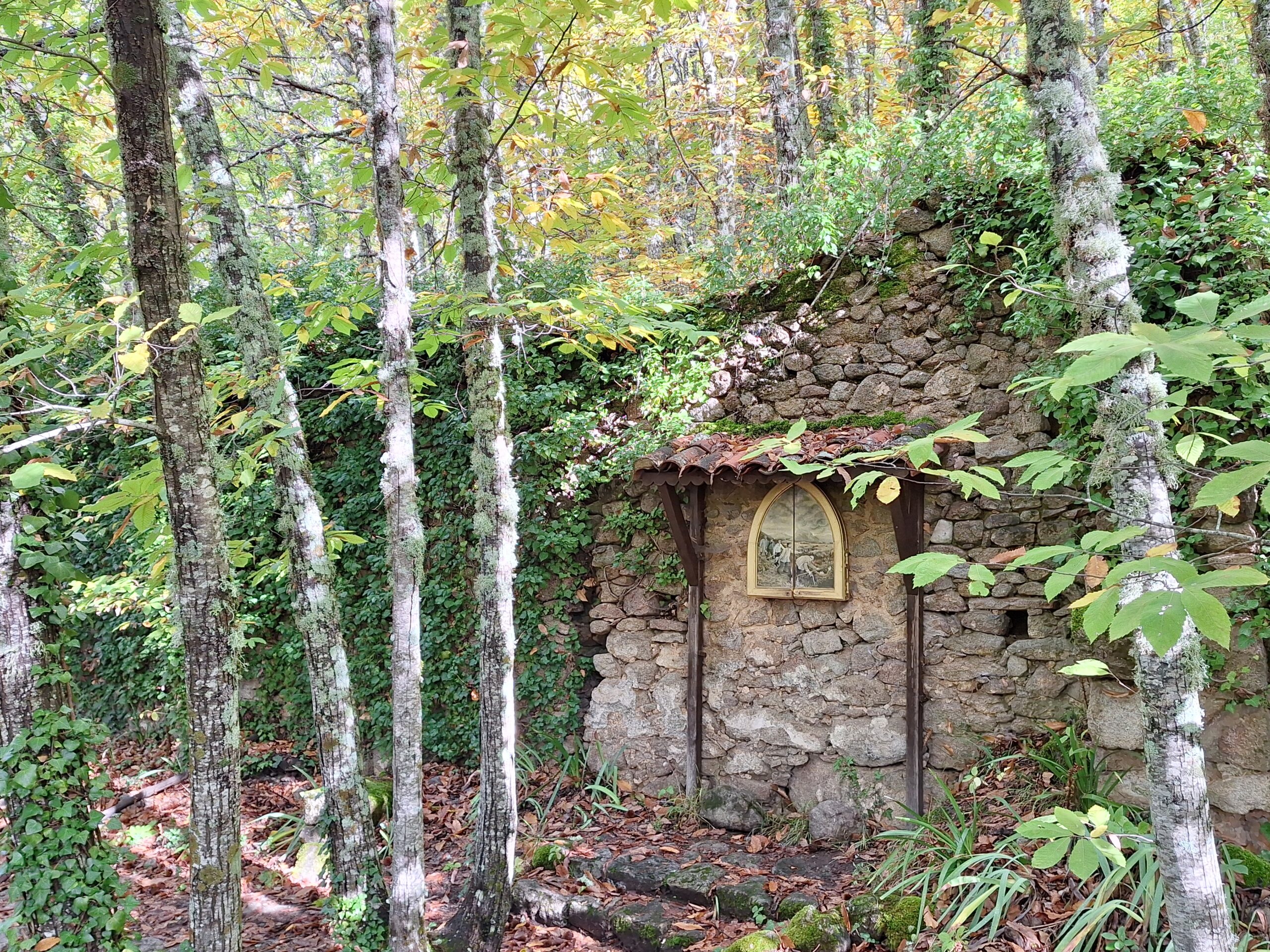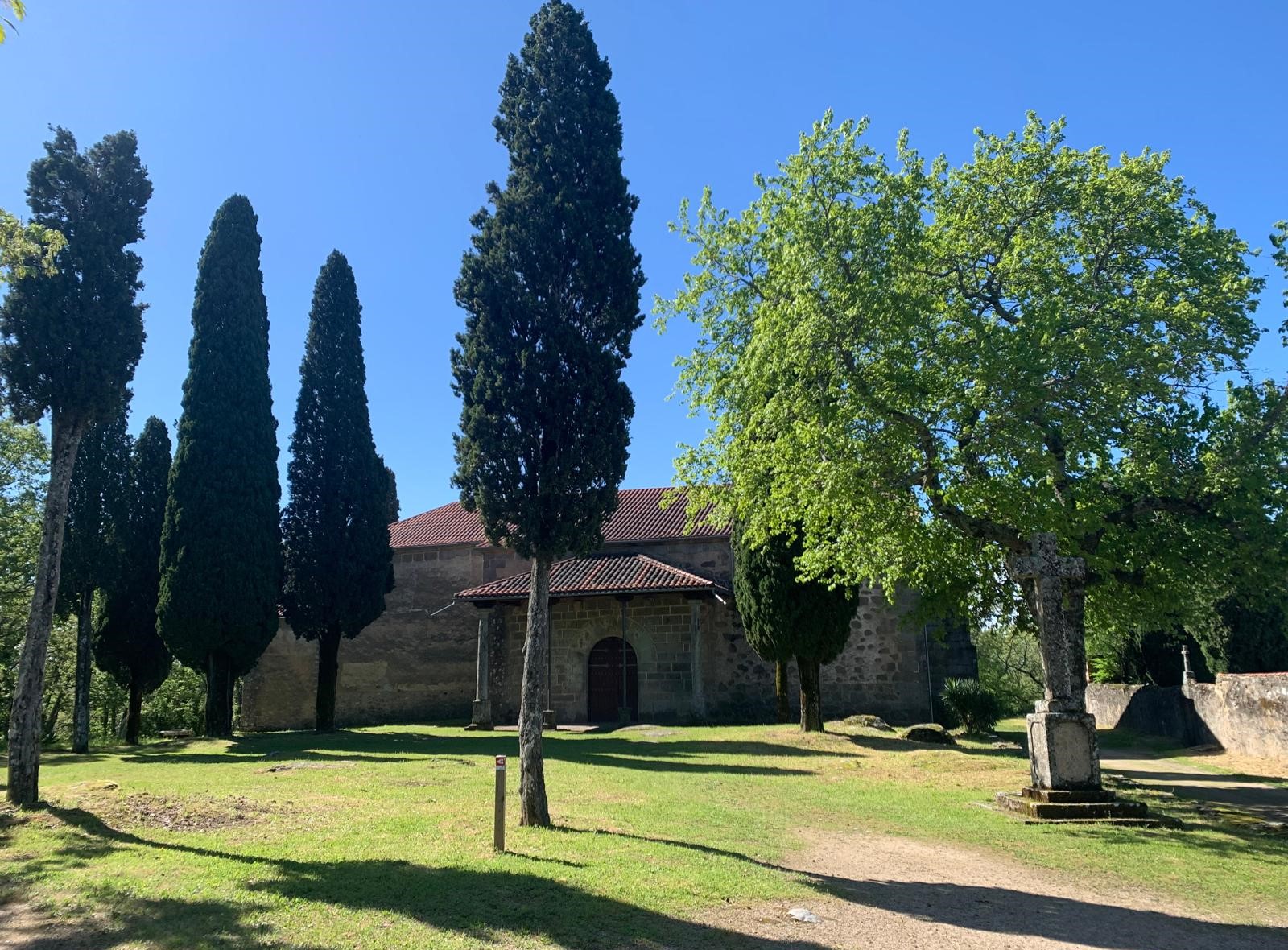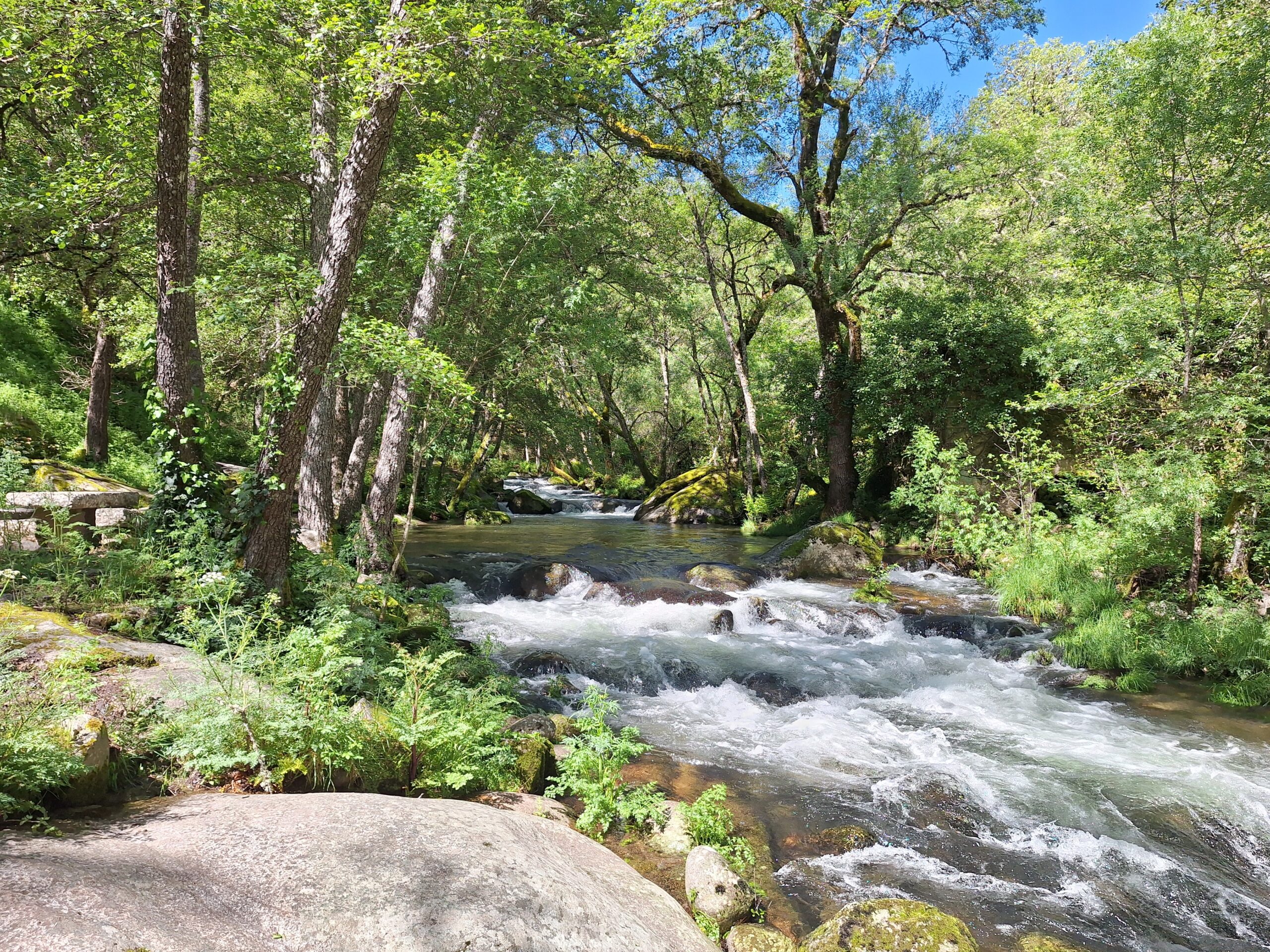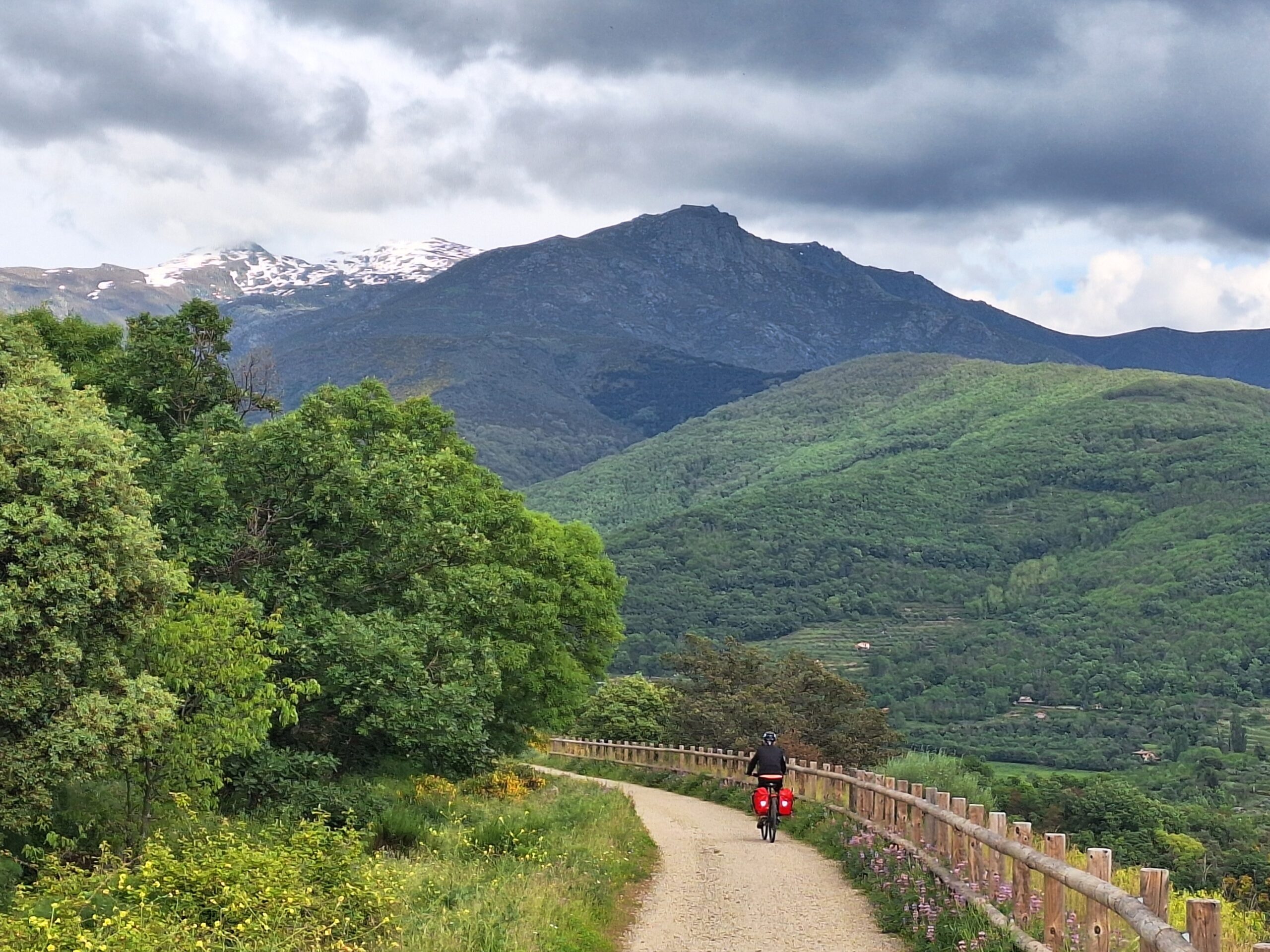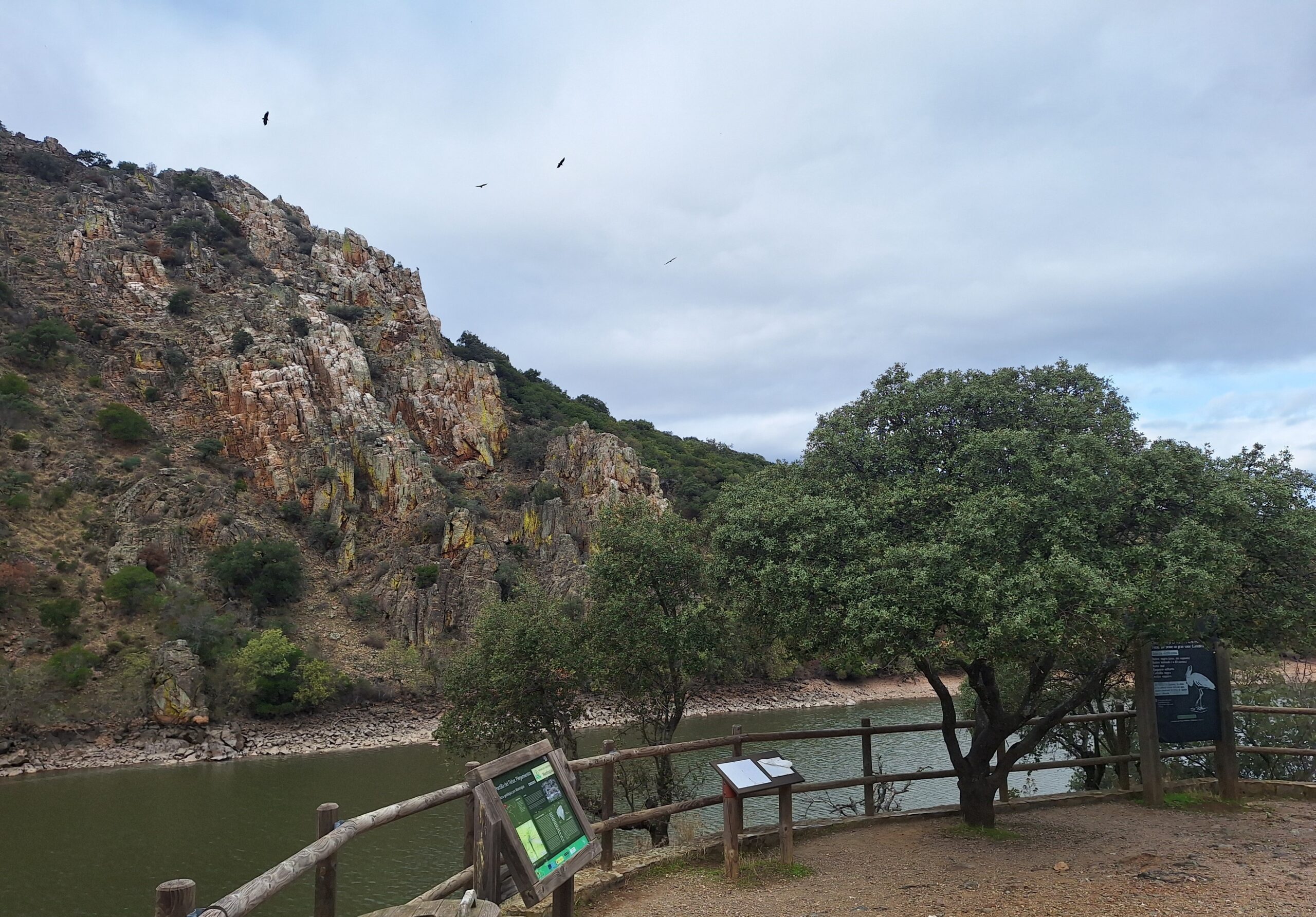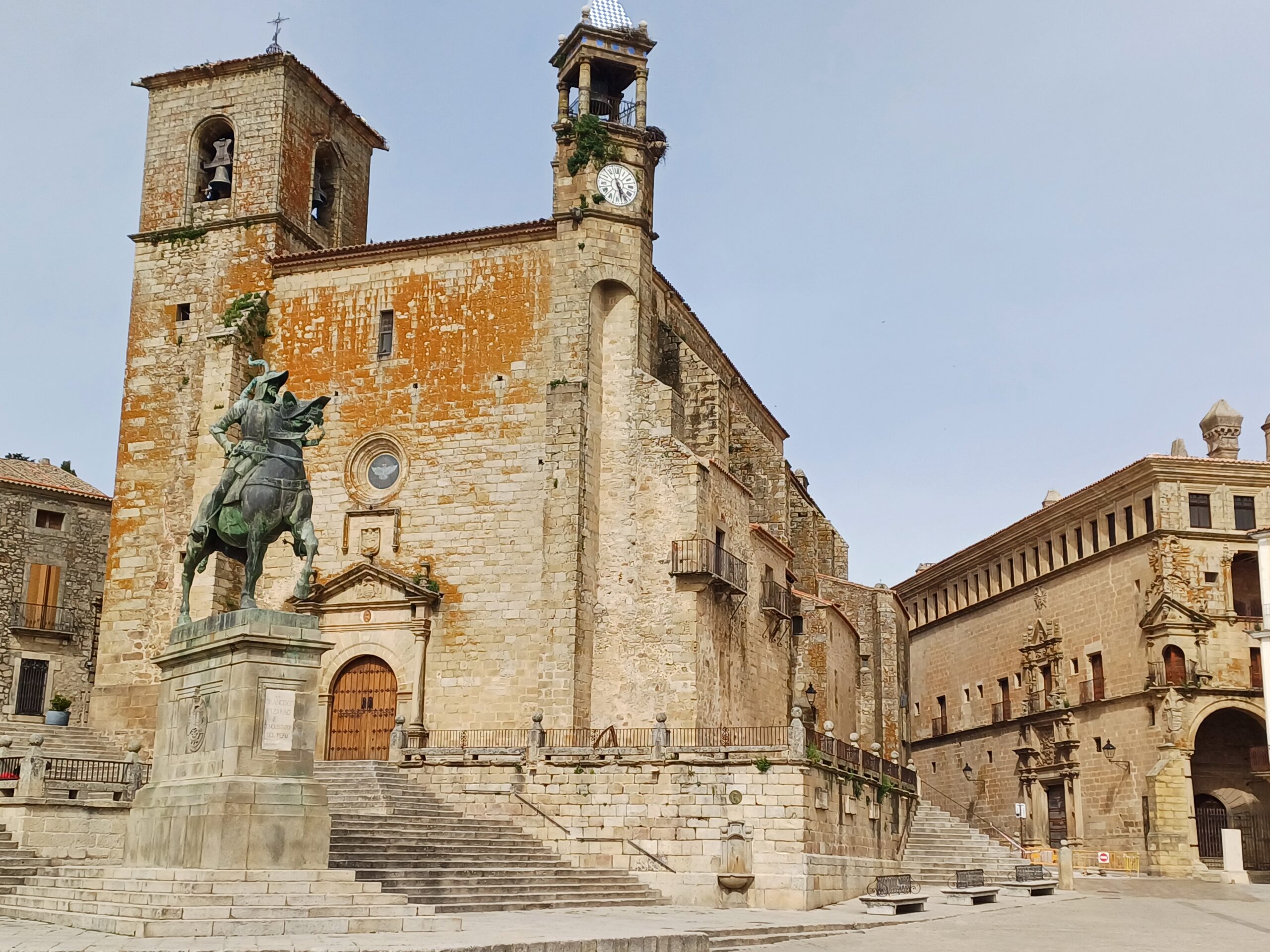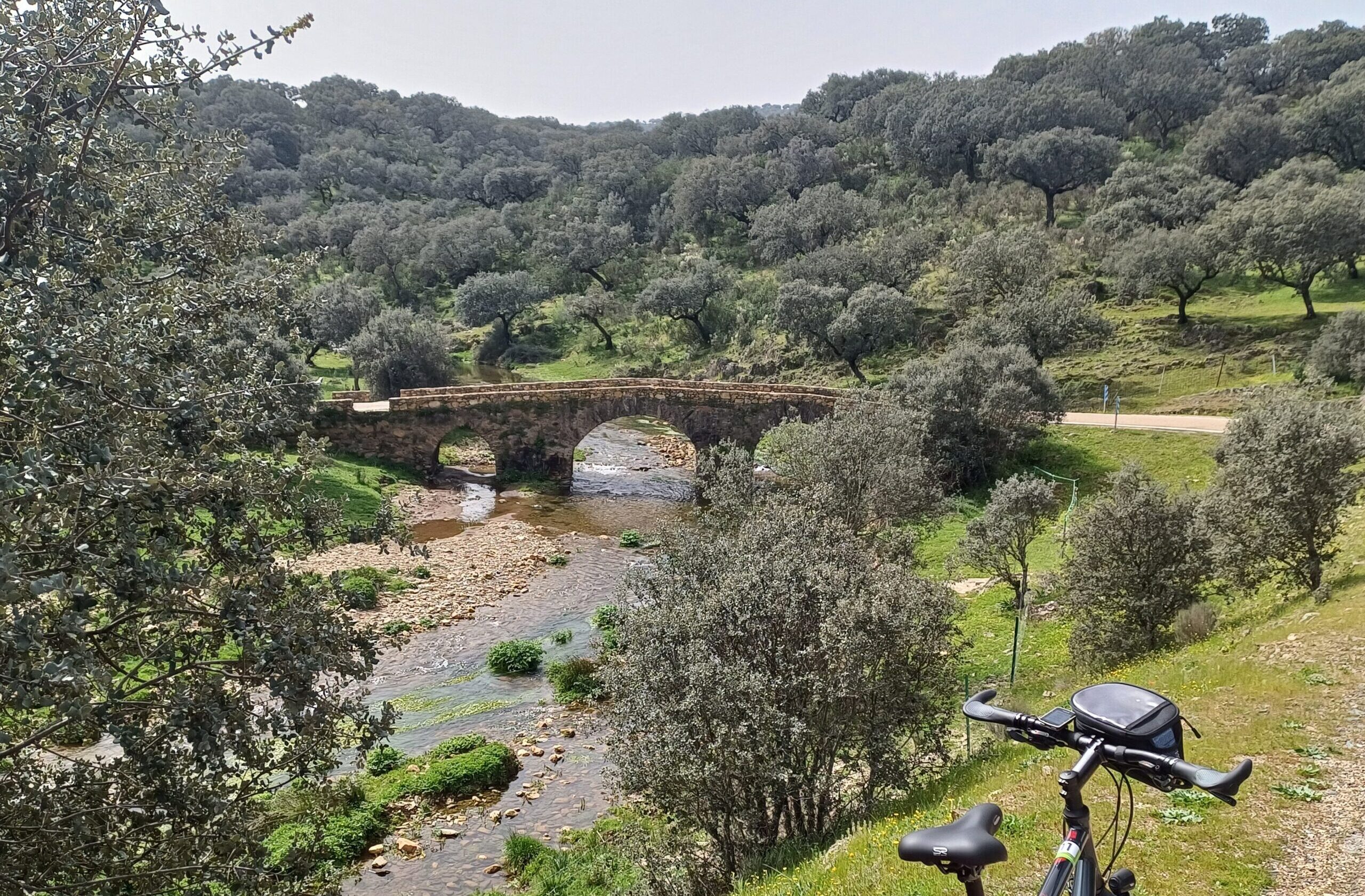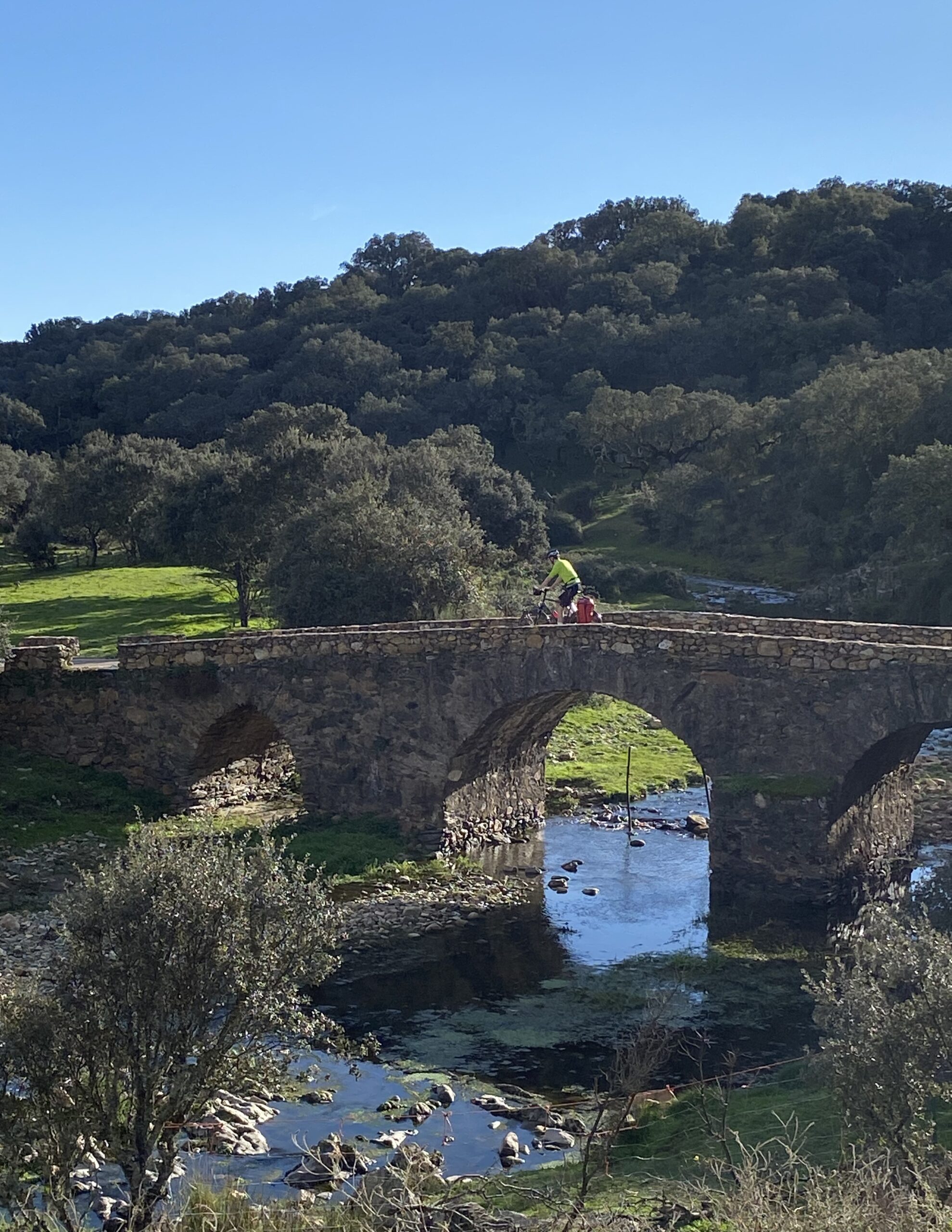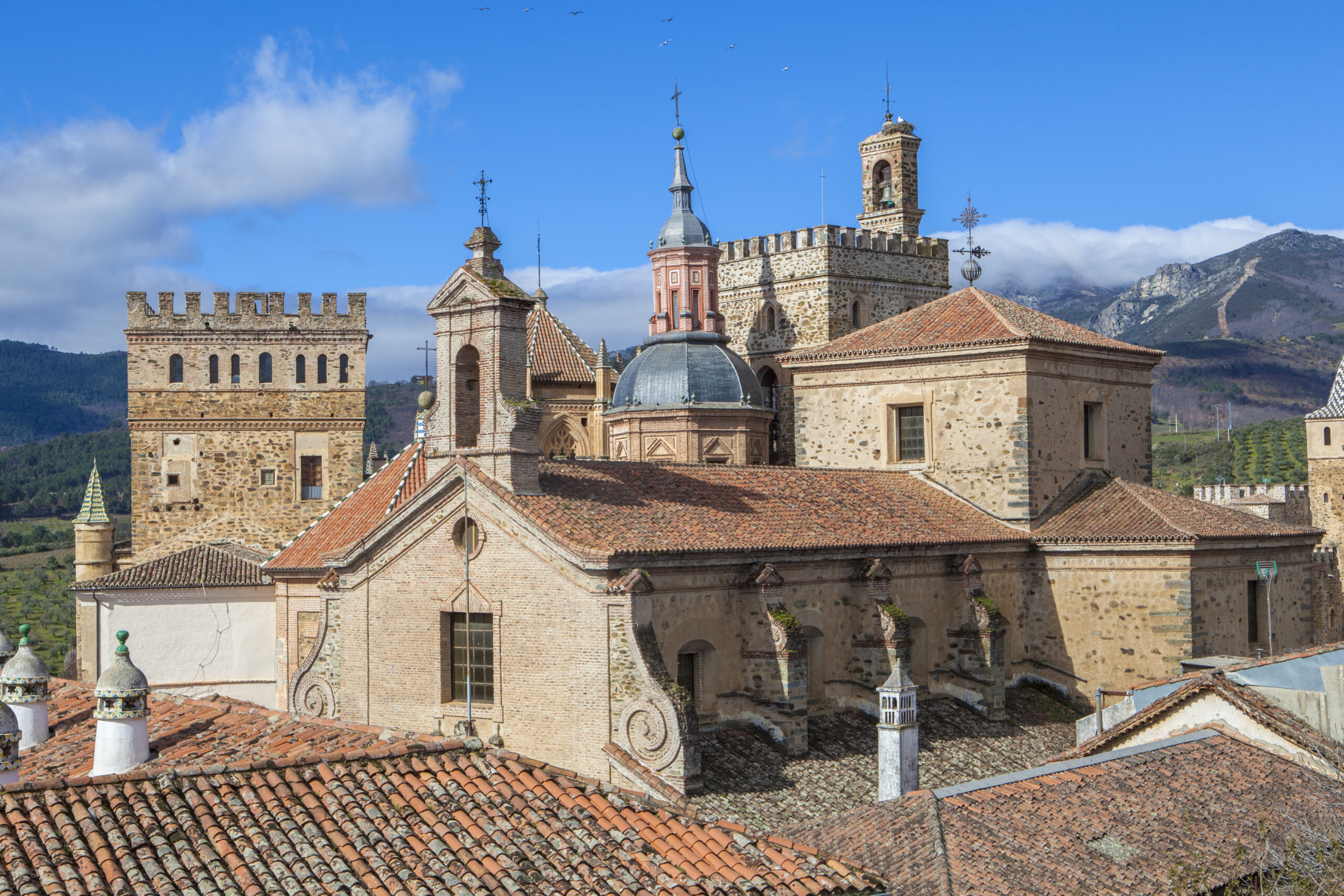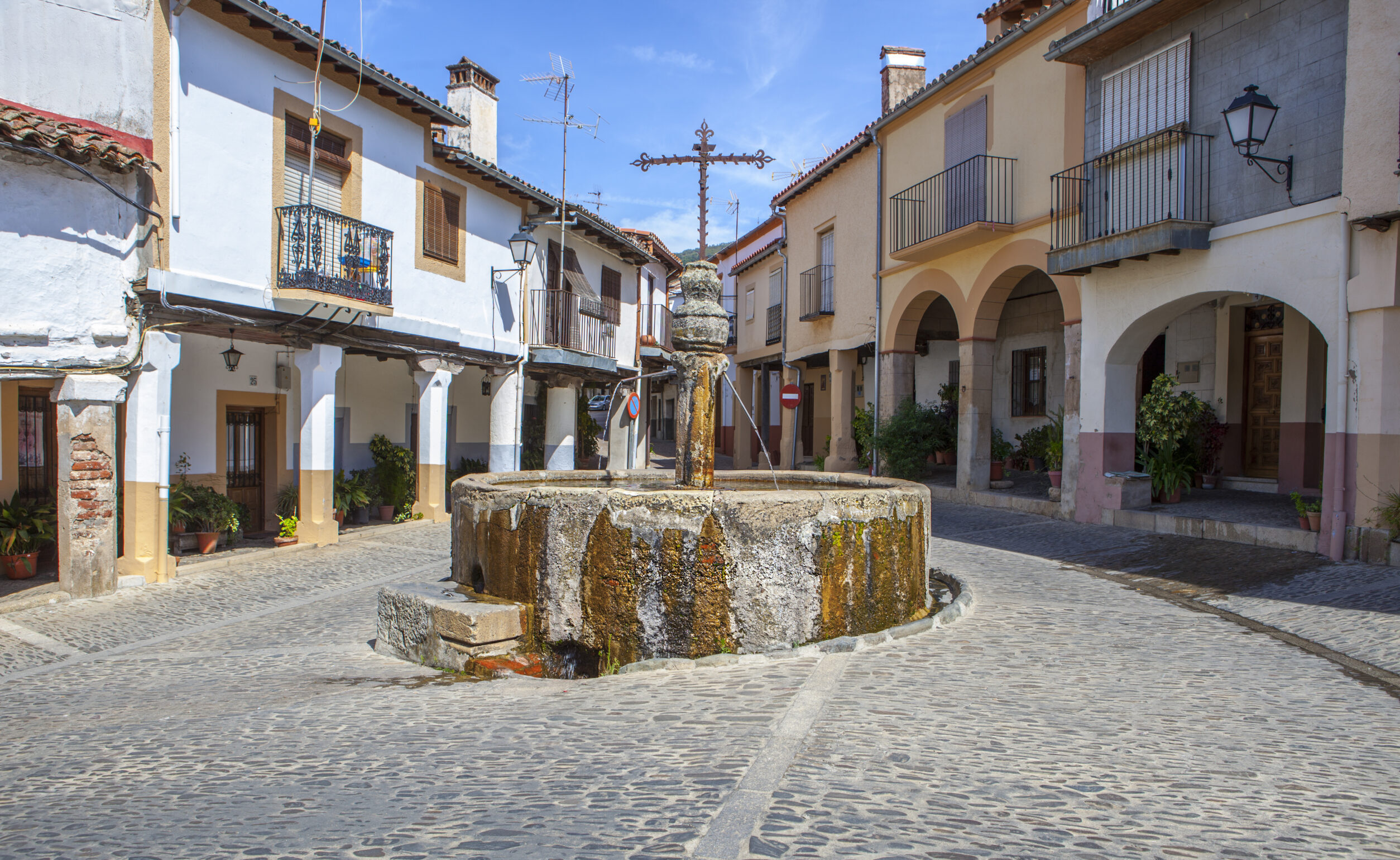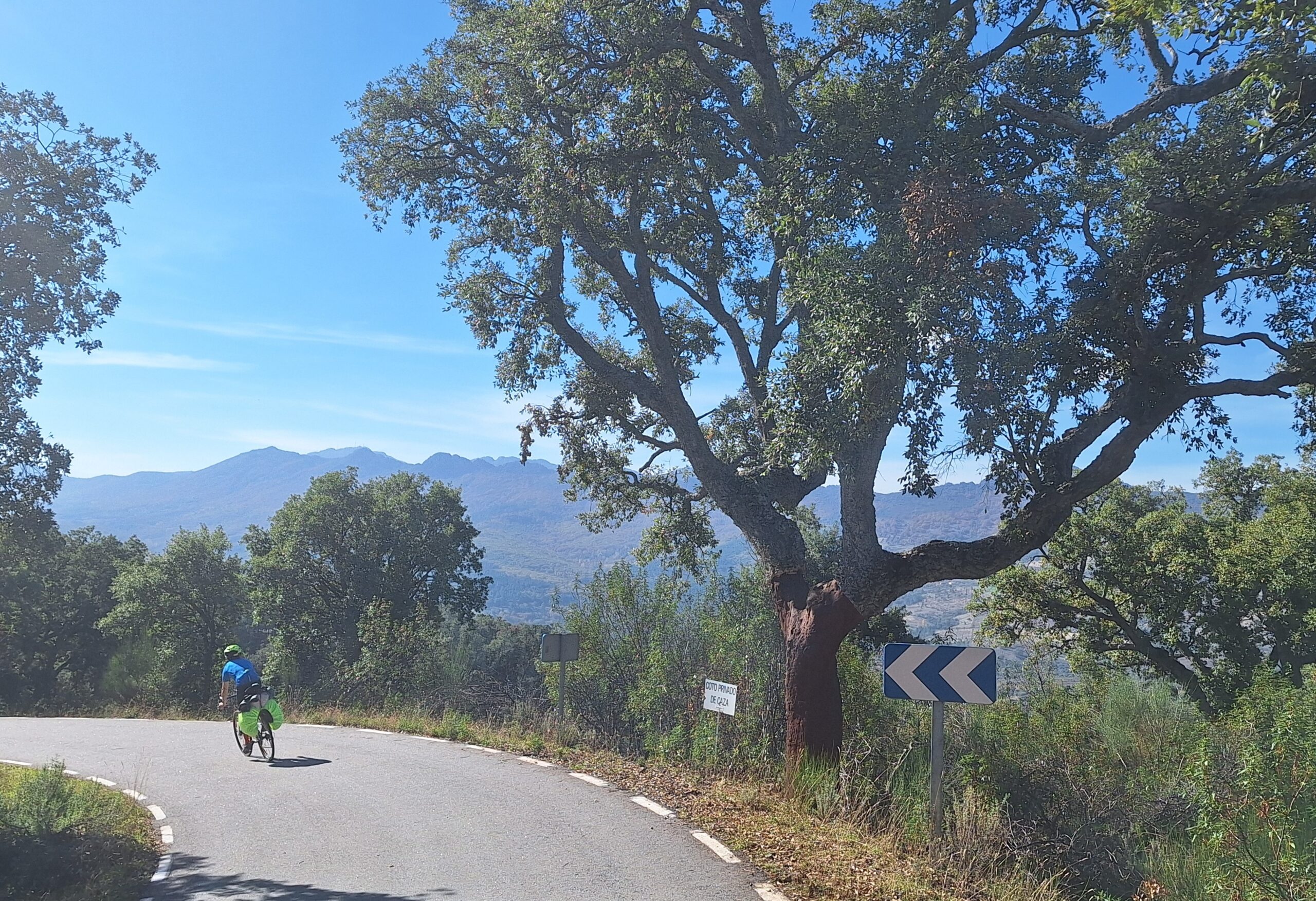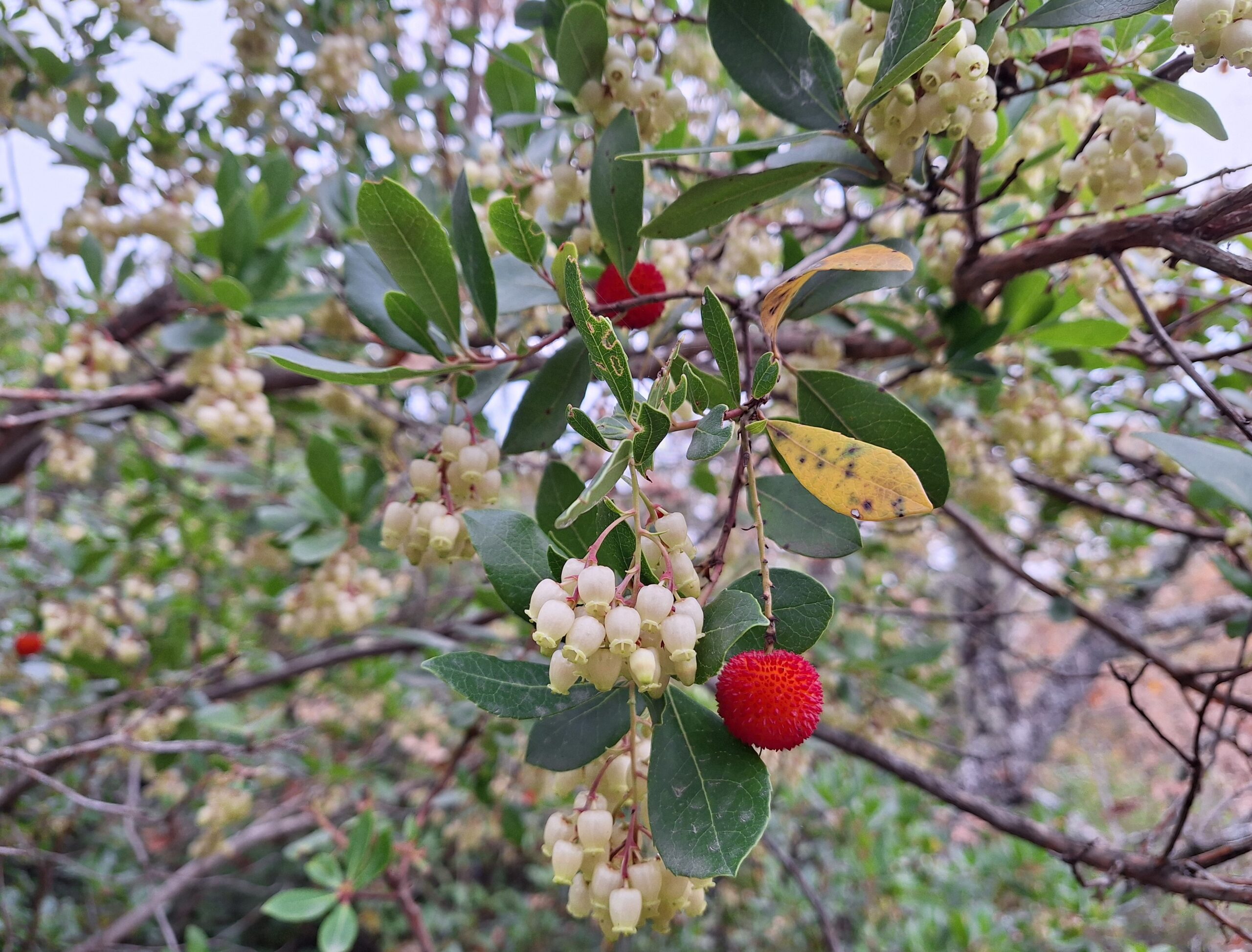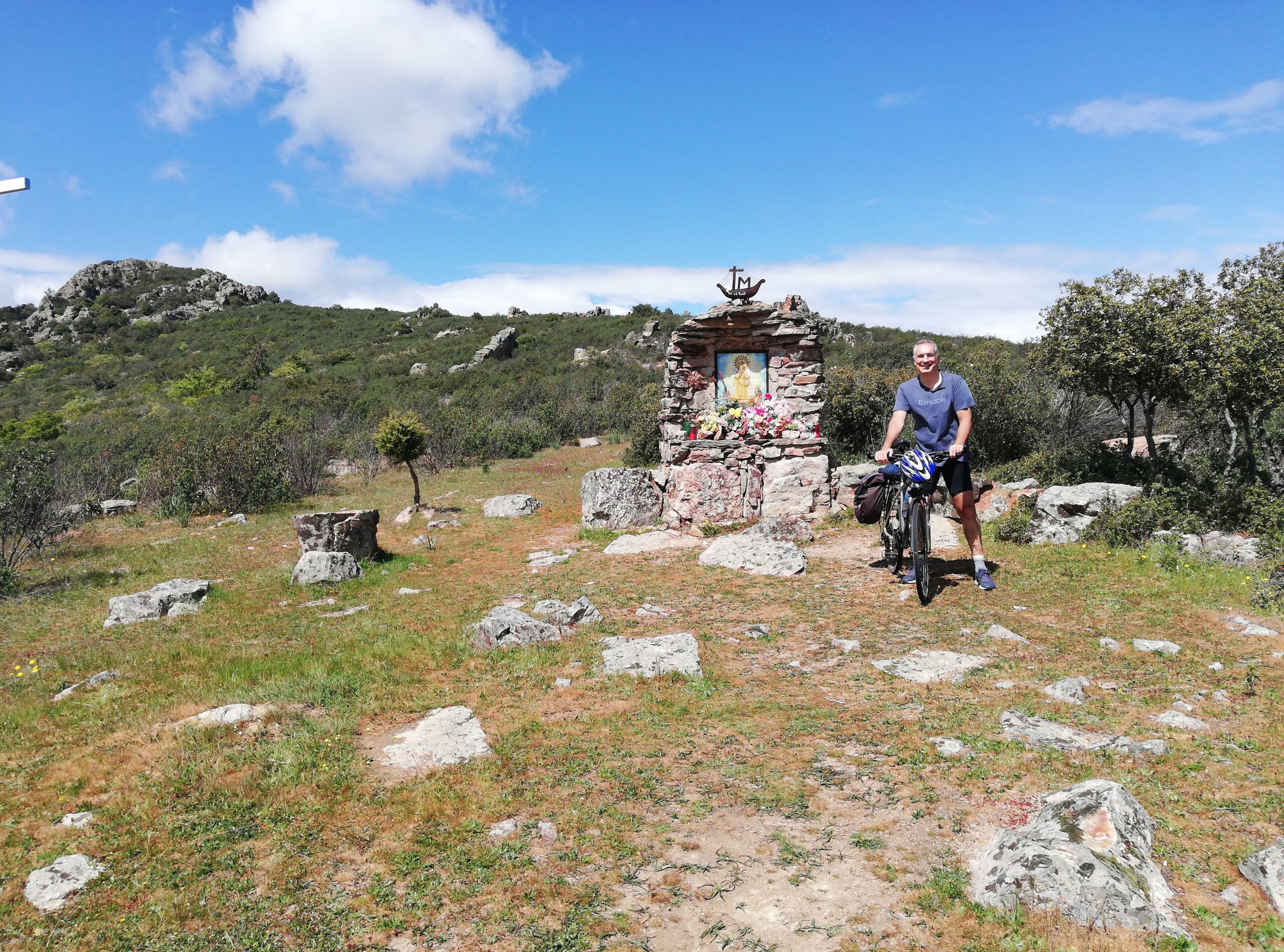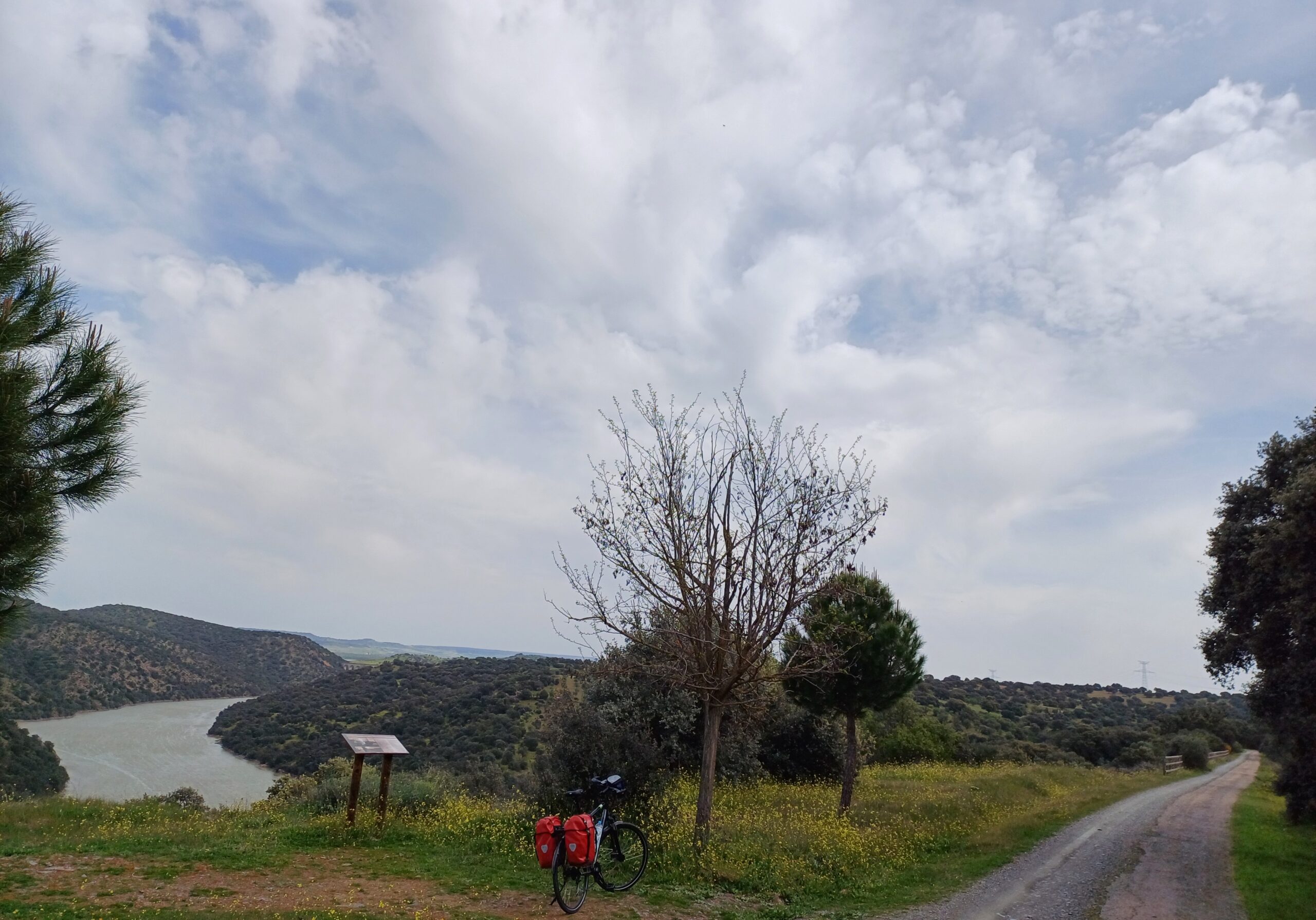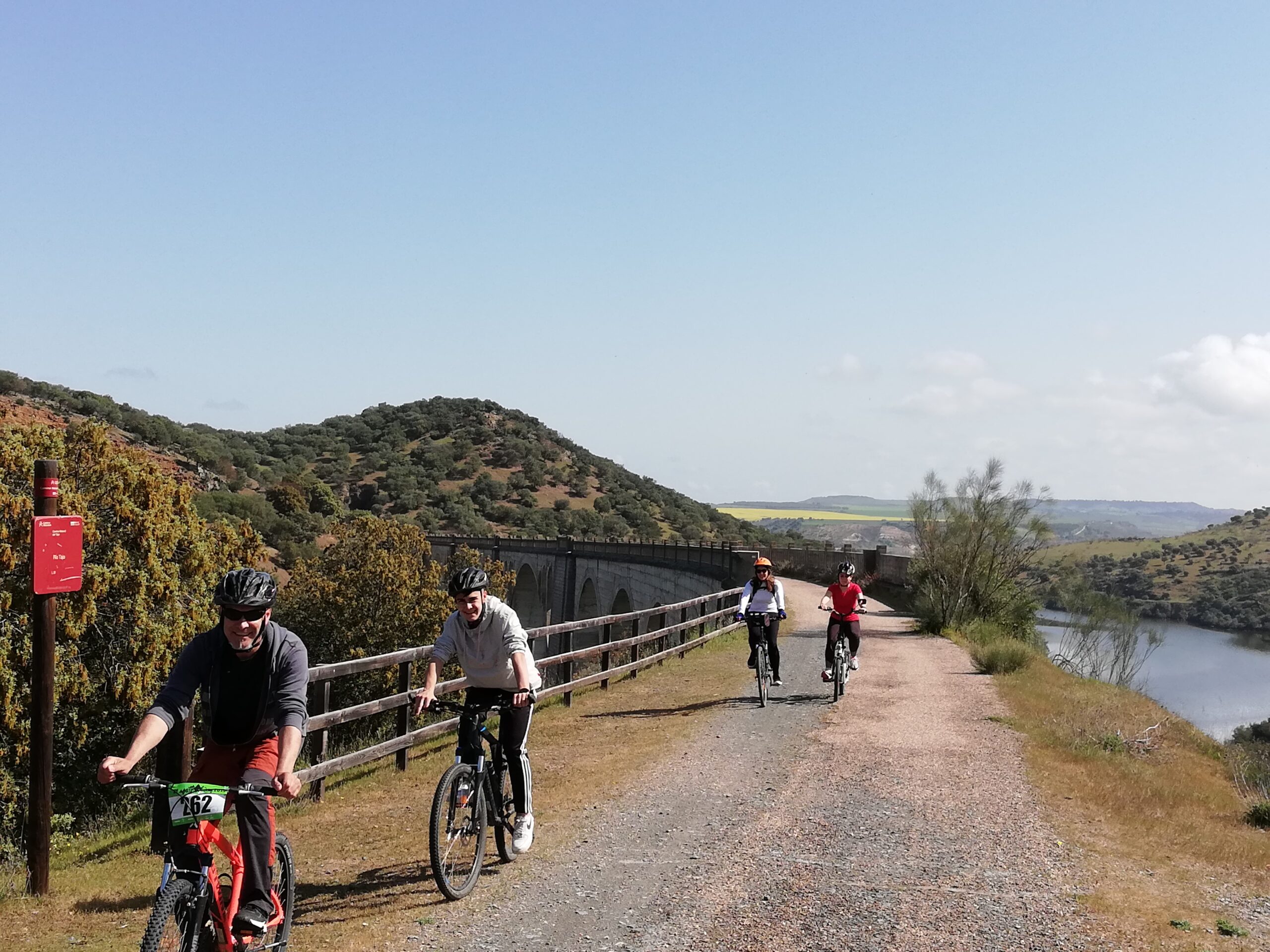Salamanca & Extremadura
Two weeks through western Spain
Take your time for one of Europe’s grand tours: it takes you through stunning landscapes and lovely nature on quiet little roads to many beautiful towns and villages. The comfortable accommodations are in a variety of surroundings: historic towns, charming villages and countryside.
You cycle through four different areas: first undulating to hilly ‘dehesas’, those are prairies dotted with holm oaks, cork oaks and ash trees where cattle, sheep and Iberian pigs graze and forage, while many sorts of colourful birds flutter around. There follows a beautiful area of middle mountains: the Sierra de Francia, where half-timbered old villages hide in dense oak and chesnut forests. Over the buttresses of the surrounding mountains you then descend gradually on a Vía Verde into Extremadura: first along the cherry orchards of the Ambroz valley, then across the lower and warmer valley of the Tagus river to cycle through the Monfragüe national park, an international destination for bird watchers. The fourth area you’ll traverse is de Sierra de las Villuercas, with great landscapes and delightful nature. In the last stage you descend to another stretch of the Tagus valley and follow de river to Talavera de la Reina.
There are three rest days in the trip, two of them with also a choice between a very nice walk in the countryside or a cycling roudtrip. Exploring on foot places as La Alberca, Hervás, Plasencia or Trujillo is in any case very enjoyable, each of these places with its own character and architecture.
Impressive landscapes and lovely nature
Small roads with very little traffic
Three days through beautiful Sierra de Francia
Four days through stunning Sierra de las Villuercas
Many charming villages and historic towns along the way
starting
Each Thursday (day 1 in itinerary) April through June, September and October
Cycling level
3 Moderate or 3 – 4 Active, according to choices.
Mostly hills and undulating, some middle mountains.
Accommodation
Good hotels in cities, villages and countryside. All with en-suite facilities. Four paradors.
Roads, aprox.:
- 430 km (268 miles) Asphalt
- 80 km (50 miles) Via Verde cycleway on former rail track
- 20 km (12 miles) Unsurfaced
Itinerary
Thursday
Arrival to Salamanca
From Madrid to Salamanca there are several trains and buses each day, taking about three hours and € 17 – 35 per person depending on the transport you choose. See renfe.com and monbus.es Along the way you may wish to stop and visit El Escorial or Avila, both well worth an overnight stay.
Salamanca has the oldest university in Spain and student life is still very much present. There are many monuments and musea to visit, including its twin cathedral, impressive Plaza Mayor and museum of Art Nouveau y Déco.
65 km/40 miles 480↑m to Guijuelo
The route starts with 20 km on a Vía Verde, a previous railway turned into cycle path. It takes you to Alba de Tormes, a little pilgrimage town with many convents and churches and a nice central square to have a rest.
You cycle further on quiet roads along a river, then a reservoir lake with great views all the way to Guijuelo, an original kind of place with no tourists but well known as the Spanish ‘capital’ of cured ham and chorizo from the Iberian ‘pata negra’ pigs.
57 km/36 miles 640↑m to the Sierra de Francia
The first part of this stage goes through the most characteristic landscape of western Spain: the ‘dehesas’ These are open forests of mainly holm oaks where sheep, Iberian pigs and cattle graze. At the same time, the dehesas are an excellent environment for wildlife, namely many sorts of birds.
In the second part of the stage, the plateau rises towards the sierra’s and the vegetation changes also to species favoring a bit cooler and more humid climate, like Portuguese oaks, ashes and ferns. On a twisting little road over a low mountain range you reach a beautiful area: the Sierra de Francia, with its charming old villages hidden in oak and chestnut forests which you are going to explore the coming days.
Rest day, walk ‘Bosque de los Espejos’ or round stage to the ‘Peña de Francia’ 44 km/27 miles 1090↑m
From your rural hotel, with great views on a scenic valley, you can today have a memorable walk. It leads to three lovely villages: San Martín del Castañar, Casas del Conde and Sequeros. In the forest you see now and then small works of art that make the experience even nicer. The total walk is 16 km and you’ll most likely want to enjoy all of it, but it can be shortened if you feel like having more of a rest.
A cycling enthousiast may alternatively fancy the challenge of climbing to the mountain top ‘Rock of France’, so called, as the whole surroundings, for the French colonists that populated this area in the 12th century.
22 km/14 miles 550↑m to La Alberca
In this short but steep stage you descend into the valley-gorge of the río Francia and climb out again to reach yet two more beautiful villages: Mogarraz and La Alberca, where you spend the rest of the day. Their popular architecture, with a combination of ashlar and dry stone on the ground floor and half-timbered on the upper floors, and the seamless transition between village and forest makes these places attractive and very pleasant to wander around.
66 km/41 miles 930↑m to Hervás
Today a longer day on the road, with spectacular cycling across the sierra’s between Salamanca and Extremadura. The landscape is a combination of forests, prairies and rocky outcrops, with great views of the higher mountains in the background. Past the town of Béjar, you ride again on the Vía Verde de la Plata, with a panoramic descent at the end of the stage.
Hervás is a nice little town in a valley with cherry orchards. Its old Jewish quarter is small but it looks very pretty during a short evening walk.
40 km/25 miles 150↑m to Plasencia
In the last stage you continue on the Vía Verde de la Plata in mostly light descent. The Vía enters Plasencia through a gorge and crossing the river Jerte, you end with a little uphill through the old town to your Parador hotel.
After the fairly easy ride, you can choose between spending the rest of the day in the comfort of your accommodation or exploring Plasencia, a town with exactly the distances and points of interest for a pleasant walk; for example along its medieval walls, old and new cathedral, palatial houses, aqueduct and Plaza Mayor.
65 km/40 miles 720↑m to Monfragüe national park (or 40 km/25 miles 420↑m on direct road)
Today you climb first out of the river Jerte’s valley and decide then whether to ride a longer or shorter route. In both you go through Monfragüe, a national park that attracts birdwatchers from all over the world: black vulture, black stork, imperial eagle or Bonelli’s eagle are just a few of the many species that can be seen here. Advantage of the longer route is that you cycle longer through the park, on a small and scenic road, but in both you visit the hamlet-information centre at the middle of the park and its most famous viewpoint ‘Peña Falcón’ The stage is rounded up with a particularly nice stretch of Mediterranean forest.
40 km/25 miles 500↑m to Trujillo
A straightforward stage on the EX-208, a broader road but also with little traffic. It goes gradually uphill to reach the plateau that Trujillo dominates. With one village along the way and the crossing of few streams as only features, you’ll arrive early with time to explore this engrossing place still today.
Trujillo is the birth place of Francisco Pizarro, Orellana and other of America’s ‘conquistadores’ In the 16th and 17th centuries, with treasures from the new world, they had a surprising number of palatial mansions and fortresses built in this otherwise small town. The Plaza Mayor is impressive and the oldest part, up on the hill and surrounded by 13th century walls, is a joy to walk around, discovering its hidden corners and little squares and gardens.
Rest day in Trujillo
Besides relaxing in the Parador or Plaza Mayor, you can take advantage that it’s Saturday and several musea and palatial homes are open for weekend visitors. There is a good choice of themes and handsome buildings.
Or maybe you’ll like to visit Cáceres, with its impressive 15th century old centre in sober renaissance style. A taxi Trujillo – Cáceres costs around € 75 one-way.
57km/35 miles 920↑m to Berzocana
This is one of the more demanding stages and it has to different parts: first you cycle through the ‘Llanos de Belén’ an undulating steppe well known among bird watchers. Even without binoculars you’ll see plenty of birds typical of this terrain, with a bit of luck including Montagu’s harrier and both the little as the big bustard.
Once past the only village in the stage, it gets more hilly and you enter again an area of dehesas, but this one very hilly, as you go down to cross several pretty streams over little old stone bridges and then up again over the next ridge. Keep your eyes peeled for some of the later crossing the road ahead, as the sizable bright-green lizard or the Egyptian mongoose, with its low, dark profile; while colourful birds as roller, bee-eater or hoopoe fladder around. Destination is a rural accommodation next to a quiet village in a great setting, midway up the flanks of the sierra.
33km/21 miles 750↑m to Guadalupe
This is per km maybe the most spectacular stage: after a first stretch ascending gradually on a scenic road, you turn into a very steep concrete road/path. On this, except for e-bikes or climbing heroes, it’s about 3 km of push-bike: first through lush Mediterranean forest, higher up along broom and heather to the top of the sierra. There follows a long downhill stretch, with birds of prey above and enjoying wide views. A final descent takes you into the village of Guadalupe. In the afternoon you can visit its impressive cloister, a place of pilgrimage for the whole Spanish-speaking world.
39km/24 miles 790↑m to Navatrasierra
Today begins with a short climb back out of the Guadalupe valley followed by easy miles of light descent on a undulating road. Then, turning into a smaller, very peaceful road, you start the delightful climb and descent of the Alto del Hospital. Up through lovely forest, down into a remote valley covered in rockrose bushes and dense copses of strawberry trees. Much of this goes through a nature- and hunting reserve, with beautiful juniper and cork oak trees at every bend and red deer a fairly common sight along the road.
The first inhabited place you’ll find in this stage is also your destination: Navatrasierra, a simple but charming village of mostly pensioners tending to their orchards and vegetable plots
75km/47 miles 600↑m to Talavera de la Reina
The longest stage but, except with headwind, not difficult and very varied. It starts with a fairly gentle ascent to the last mountain pass in the tour. You then leave the sierra’s of Extremadura behind and enter lower, drier lands in the province of Toledo, cycling through a mix of scrubland, almond and olive orchards and Mediterranean ‘maquis’ bush. Through a remote-feeling area you reach another ‘Via Verde’ cycle path on a former railway which takes you to great views of the river Tagus’ valley.
Final destination is Talavera de la Reina, known for its ceramics, of which you can visit a museum, and a lively, unassuming town with no tourists. Perfect to celebrate the completion of this great ride in some of its many bars, with moderate prices and courtesy tapa’s served with each drink.
Depart
From Talavera de la Reina there are:
Trains to Madrid (1 hour 30′, +/- € 18) with several departures each day. Because the trains are often full, you are advised to buy the e-tickets at least three weeks in advance at www.renfe.com If needed, there are also busses to Madrid.
Busses to Toledo (1 hour 20′, +/- € 12) In this case, tickets are usually available the day before or just before depart at the bus station next to our hotel. See www.monbus.es for departure times.
2026 price per person, on double room basis: € 1680
Included
- 14 nights hotel accommodation
- 10 x buffet breakfast and 4 x continental breakfast
- Route description in English, maps and GPS tracks. All sent digitally to your e-mail address.
- Luggage transport
- Telephone assistance
Excluded: all items not mentioned in ‘included’ above
Options and supplements
- Rental bicycle, trekking hybrid…………………. € 190
- Rental e-bike …………………………………………. € 390
(both rental prices include drop-off Granada)-
- Supplement for single room ……………… € 520
- Extra nights quoted upon request
-
Rental bikes delivered with one panier, small handlebar bag, repair set, pump and lock. If not bringing your own, you can borrow a helmet from us.
This offer is covered by the STO Garant guarantee.
You can find the conditions for this guarantee scheme on STO Garant’s website (www.sto-garant.nl/en/downloads)





